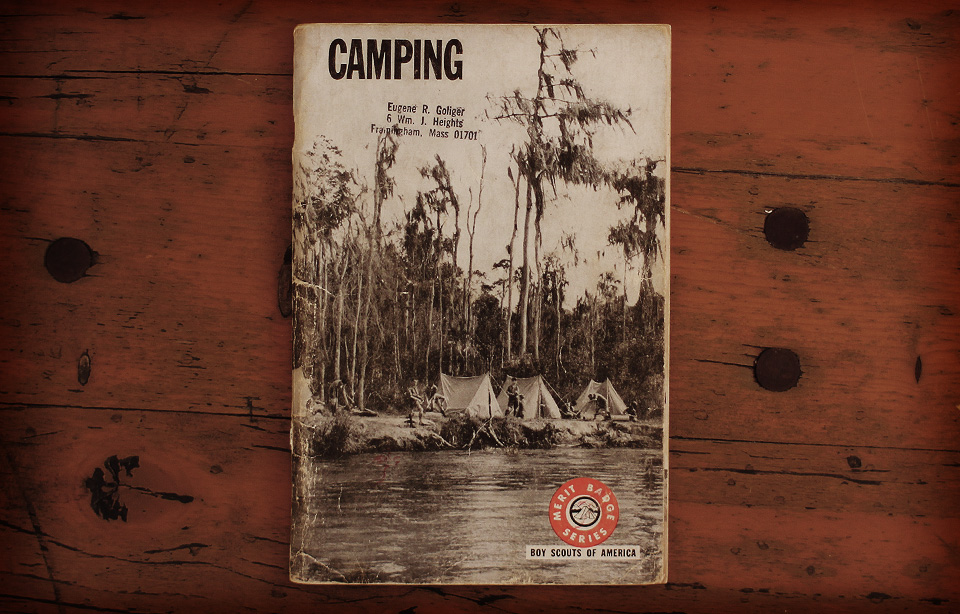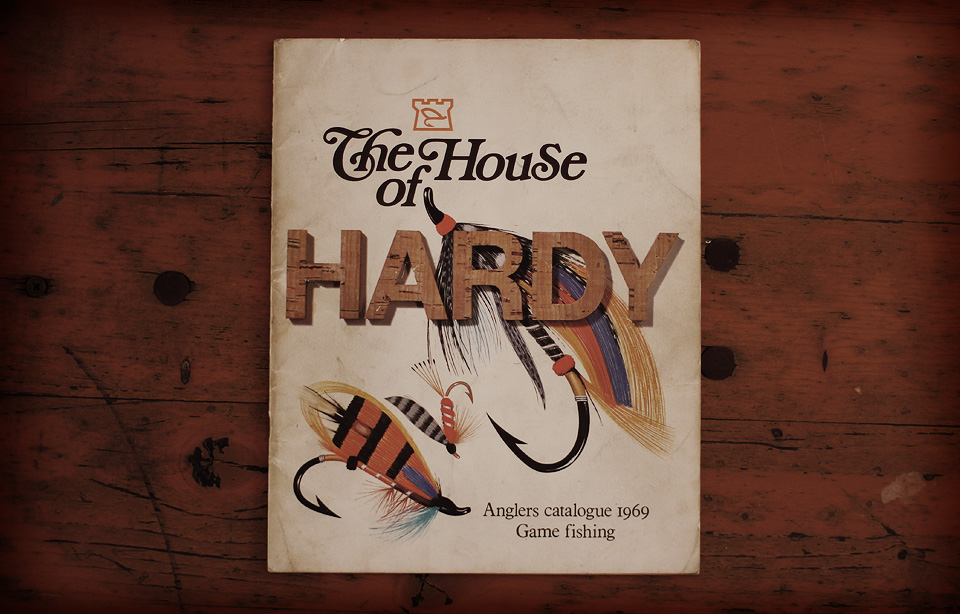The doors to the VHD store are open! (so to speak).
You can get your hands on the VHD t-shirt, posters and our patch and sticker bundle, and check out securely with PayPal.
All the proceeds go towards keeping the VHD up and running.
The doors to the VHD store are open! (so to speak).
You can get your hands on the VHD t-shirt, posters and our patch and sticker bundle, and check out securely with PayPal.
All the proceeds go towards keeping the VHD up and running.

Last Hike - A couple of days on the Cleveland Way
So that was 2013. Certainly a huge year for me personally and another big year for the Vintage Hiking Depot. I became an uncle, I got married, I learned to fly fish and tie flies, started Geocaching in a big way and I stayed in a yurt. I reached my 100th post, the VHD poster collection finally came to life (I even displayed them as part of a local art walk) and through the VHD I've been introduced to many great people and learnt so much.
While I feel I've fit a lot in this year there is definitely much more to come. As far as resolutions go it's pretty much identical to every other year; get out more, read more, write more, try more new things and most of all have fun. A very happy New Year to everyone, thank you all for reading and contributing to this blog, here's to 2014.

Friedrich Nietzsche
A wonderful quote by Friedrich Nietzsche, the German philosopher and composer. Written in 1888 and taken from "Twilight of the Idols, or, How to Philosophize with a Hammer"
“Only thoughts reached by walking have value”
Wisdom from the wise, I couldn't agree more or have said it better.

BSA Gear List - 1966
A vintage gear list from the Boy Scouts of America. This particular list is from the 1966 Merit Badge Book. I've had this book for a long time but as a former Scout in the UK, I disagreed with some of the BSA membership policies and it didn't feel right posting it, they have since agreed to take action and while the rule change was voted in by a pitiful margin at least they have made steps in the right direction.
“WEAR Complete uniform Pr. of comfortable hiking shoes* Sweater or jacket* Pr. rubber lightweight* Raincoat or poncho* Rainhat or rainhood*
CARRY IN POCKETS Jackknife Matches in waterproof case Handkerchief Wallet and money (including dime for phone call) Individual toilet paper in plastic bag Compass 2 0r 3 Band-Aids
TOP OF THE PACK OR OUTSIDE POCKET Repair kit containing: rubber bands, needles, thread, buttons, safety pin, shoelaces, cord, extra plastic bags, fire starter Pair of extra socks Eating utensils: knife, for spoon, cup, bowl, plate Flashlight
INSIDE YOUR PACK OR FASTENED TO THE FRAME Sleeping bag or 2-3 warm blankets
INSIDE YOUR PACK Waterproof groundcloth, plastic sheet 1 pr. moccasins or sneakers Plastic or cloth clothes bag containing: extra shirt, extra pants, pajamas or sweat suit, extra handkerchief, extra socks, change of underwear Toilet kit Containing: washcloth, comb, soap in waterproof container, hand towel, bath towel, metal mirror, toothbrush and toothpaste, washbasin (plastic or canvas)
*if not warn, have readily available in pack.”
This is a fairly comprehensive and weighty list but to be fair it is for camping not just hiking. I also love this great illustration to go along with the sections.

BSA Gear List - 1966
There is a whole series of these book covering a multitude of subjects they are cheap and easy to find but packed with great information.

Olive Woolly Bugger
As many of you may know I recently entered the wonderful world of fly fishing. Living here in Maine it's pretty much mandatory; like wearing Bean boots and sporting facial hair. Like a lot of newcomers I'm overwhelmed by all the different types of flies – dry flies, wet flies, streamers, emergers, deceivers, poppers, nymphs, just to name a few. To better understand them all and how/when to use them I was advised to start tying own, and now that the Maine fishing season is dying down I can get properly stuck in.
Fly tying is extremely satisfying, and extremely frustrating. I've bought a few how-to books but by far the best instructions I've found are from Tightline Productions. Tightline makes videos for a few companies, including Orvis, and they are incredibly well put together - easy to follow, well shot and most importantly the flies come out fantastically.
Olive Woolly Bugger from Tightline Productions
This video makes a bombproof woolly bugger, the best pattern I have seen. Their full set of instructional videos can be found here. If you already tie flies or are interested in trying it, check them out.

Mother Earth News -The Backcountry Handbook, 1989
A top tip from "The Back Country Handbook" written by the team at Mother Earth News in 1989. This is a tip I hope I never have to use but very good to know. What do you do if you get skunked in the back-country miles from a grocery store?
“What if you’re way off somewhere in the boonies and fresh out of tomato juice, mustard, vinegar or bleach? In that case build a small fire, and stand (or hold your pet) in the smoke of burning grass, hay, juniper or cedar. Similarly owners of wood stoves can help freshen a skunked house by building a slow fire of cedar or juniper, then closing the top damper and opening the stove door so that the fragrant smoke fills the room. (Neither of these sister woods contain pitch or other resins, so, unless you drastically overdo it, you needn’t worry about smoke damage.)”

The House of Hardy - Anglers Catalogue 1969
Found this gem in Macleod's Books, Vancouver. What a wonderful book shop, there are piles of seemingly unorganized books to rifle through. This catalogue came from its depths; a real fishing time capsule, one to study and drool over. I uploaded a whole bunch of catalogue pages here. Check out the "Anglers and Sportsman's Pipe."

The House of Hardy - Mark 1969
The imagery in this catalogue is pure fishing gold but I especially love their logo - thick lines and great colours.

Caching Kit, Ready
I'm a latecomer to the activity but I now have my caching kit down. Doesn't everyone have a custom rubber stamp? I'm now at 50 caches, not that epic compared to some, but I have ticked off 4 countries and it gives me a great excuse to head out, and it adds a further exploratory element to my adventures.

Memorial to William Crossing:William Crossing at Duck's Pool in central southern Dartmoor
The origins of caching are fascinating too. The earliest form of this outdoor hobby is probably "letterboxing" which was said to have started in Devon, England in 1854. William Grossing wrote in his "Guide to Dartmoor" that James Perrott placed a bottle for visitors to leave their cards at Cranmere Pool on the northern moor. This evolved into a set of boxes placed around the moor where hikers left letters and postcards, the next people to come along would pick them up and put them in the post - hence "letterboxing". The boxes were so remote that often weeks or months went by before the letters were collected and mailed, this gave an air of excitement, anticipation and mystery to the whole venture.

Caching Stamp
The idea behind "letterboxing" is taken to a new level with Geocaching, it leads adventurers all over the world in search of hidden goodies. If you're not a cacher give it a try, it's fun, interesting and often takes you to places you wouldn't go. Get started here.

The Tracker
I recently spent a couple of nights in Portland, Oregon. Upon arrival I instinctively headed straight for Powell's City of Books and did some serious damage to their outdoors section. During my spree I purchased a copy of "The Tracker" by Tom Brown Jr. To my shame I'd never heard of him before, but the cover looked awesome and there were three different re-prints of this one book so I figured it must be something special.
It turns out I was right - what a great read. It follows Brown and his friend Rick through their childhood as they learn to live with the woods and develop their skills in tracking and wilderness survival. They are guided by Rick's grandfather, a Native American called "Stalking Wolf," and as they unravel his cryptic challenges, each one created to hone their outdoor skills, they learn to become "one with the Spirit-That- Moves-Through- All-Things."
This book is about learning to live in harmony with nature, Brown states that - "Stalking Wolf often told us that nature would never hurt us as long as we went with it and did not panic. As long as we were in tune with nature we were invulnerable." Following this seemingly simple rule Brown travels the country, living off the land and learning all he can as he grows into one of the countries most qualified trackers and outdoorsman.
"The Tracker" is vividly written and Browns stories are truly incredible and engrossing, I'm excited that he has an extensive list of publications for me to get stuck into. Brown has now helped track and find countless missing people, dangerous animals and fugitives of the law throughout the USA. He founded the Tracker School in 1978 from Pine Barrens in New Jersey where he teaches the skills he learned and developed.

The stunning Phillips River
It finally happened, I caught my first real fish on a fly. All it took was a trip to British Columbia, a day on the magnificent Phillips river, an awesome guide, a honeymoon, and a very patient Mrs. VHD.

Pink Salmon
Not the striper I'd been hunting but a beautiful wild pink salmon. Known here in the States as the humpback salmon in Canada they are called pinks, allegedly for their attraction to pink lures. This beauty fell prey to a pink woolly bugger. I also pulled in a couple more pinks and a decent sized cut-throat trout, all on the fly. Amazing.

Bean School of Fly Fishing Button
As tradition dictates I'm finally able to rotate my LL.Bean outdoor school pin the right way up and wear it with pride. Big thanks to our guide Kyle who put us on the fish.